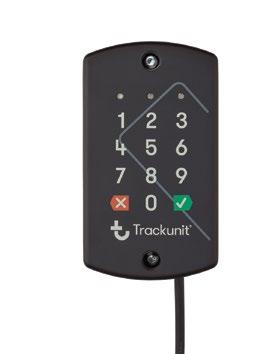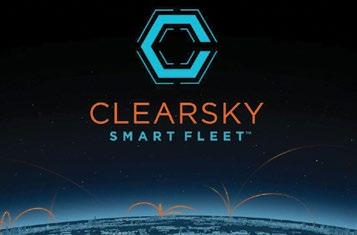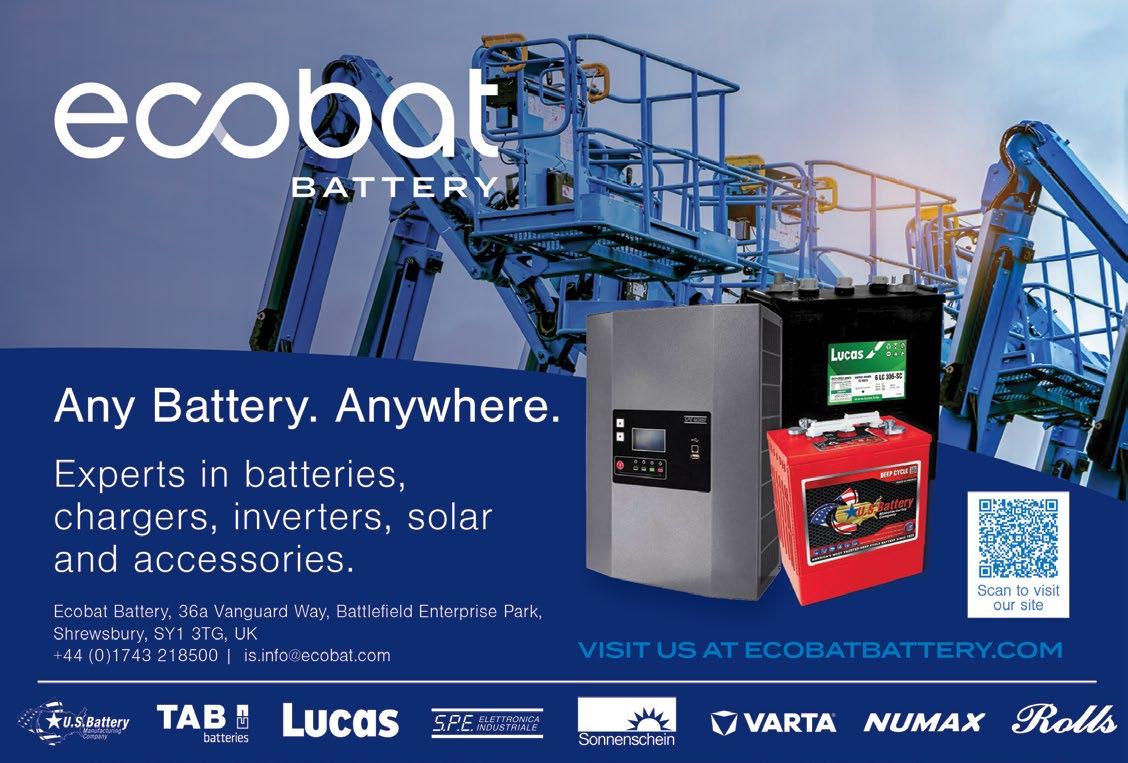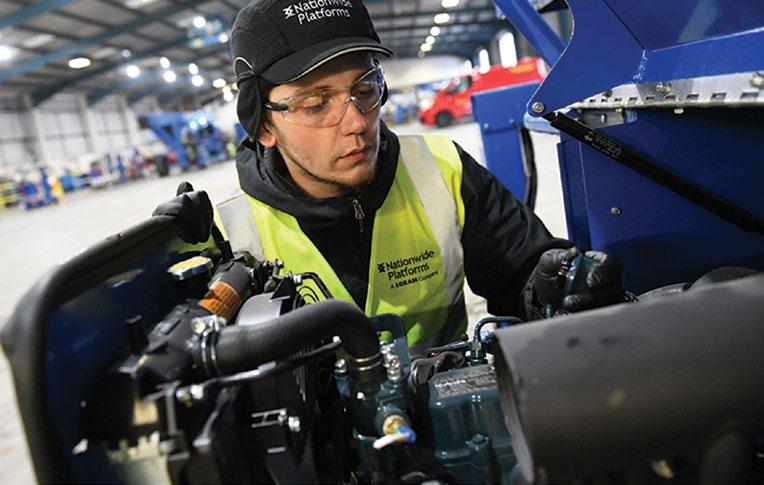
10 minute read
Keeping in Touch…
Keeping in Touch…
Telematics is a quickly evolving technology transforming the way companies oversee and manage their assets. In the words of leading Danish specialist Trackunit, telematics is a hi-tech combination of information technology and communications enabling real time data collection, analysis and access. An increasing number of companies have integrated telematics with a range of components such as GPS trackers in order to track and monitor their equipment’s location, activity and maintenance status in real time.
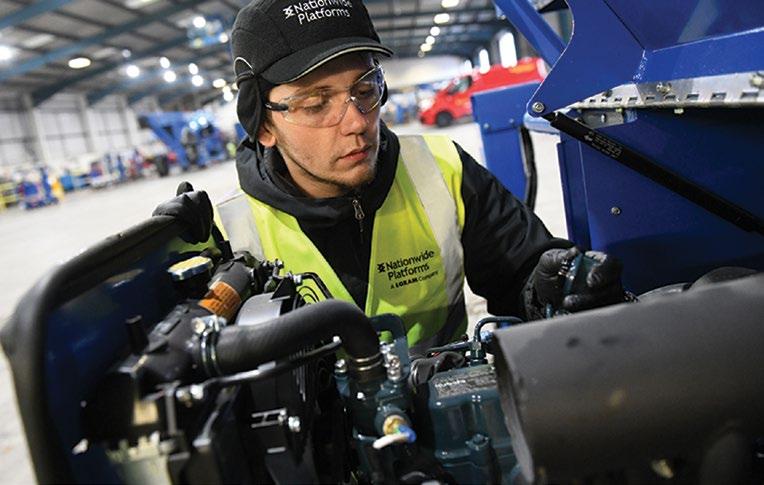
The technology can be traced back to the early 1960s and cold War, with GPS allowing the US army to keep track of its troops and equipment. While the first satellite Navistar 1 was launched in 1978, it was not until the second half of the 1990s that GPS became commercially available, with the first commercially practical GPS tracking equipment coming on stream in 2000, allowing owners to remotely see the precise location of their equipment on a single software platform. It is now a crucial part of the telematics package. When a piece of equipment breaks down, owners can locate the vehicle, fix it, track maintenance progress and often rectify issues remotely, or at the very least see the problem and ensure the mechanic has the parts and tools needed to sort it. All of which helps reduce downtime.
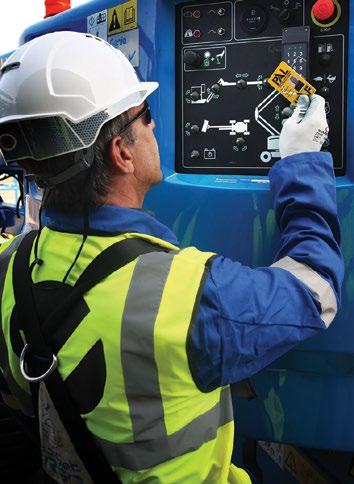
How it works?
Telematics systems work through a combination of hardware, software and wireless communication technologies. The process involves collecting, transmitting and analysing data from vehicles and equipment to helping improve the management of the equipment and the business. Data is gathered using a range of sensors and equipment - GPS devices, accelerometers, anemometer, fluid level sensors and motor diagnostic sensors etc - which collect data on all manner of variables such as location, equipment status and usage etc which is then transmitted to a computer or data storage cloud, either live or periodically.
The data is then stored and processed for analysis using telematics software. A key element in converting a vast amount of data into usable information, making use of algorithms and analytics tools. This analysis recognises patterns, trends and any irregularities in order to provide useful data on fleet performance.
A satellite communication part sends data from the telematics device to a company’s main computer or cloud based platform. While components rely on satellites in regions with patchy mobile coverage, a regular mobile phone network is usually employed where good network coverage is available.
A telematics system’s software components are essential for processing, analysing and presenting the data, allowing fleet managers and operators to easily and quickly access the information, without getting lost in a fog of pure data.
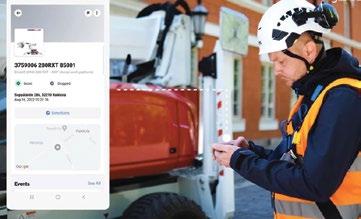
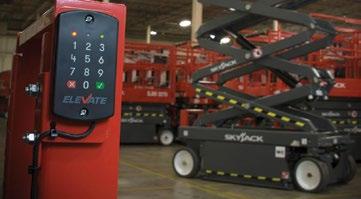
How telematics are used every day
Telematics is one of those technologies that is increasingly blended into our daily lives often without is even noticing, working in the background, with the intention to improve productivity, security and convenience in fleet management, logistics and transportation.
On site it can be used in a number of ways to improve safety, for example by only allowing authorised users access to the equipment, as well as restricting its use to operators that don’t have proof of training to a particular level. It can also help raise safety standards and modify risky behaviours by alerting site managers, equipment owners or employers of unsafe use, such as operating a crane or platform when wind speeds are above the maximum permitted levels.
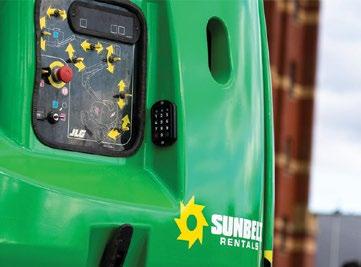
The tracking is well known with a large number of private cars and other vehicles equipped with GPS, if only for the ‘Sat Nav’. The classic benefit is to help reduce theft, or at least raise the odds of recovery. It can also help by providing and tracking the position and routing of delivery trucks or mobile service engineers, allowing dispatchers to check where a driver is, particularly helpful for checking who is closest to a machine that might need attention, or to inform a customer on progress of his delivery. Increasingly rental companies are providing their regular customers with access to this information so that they can check for themselves - just as you might track a courier delivery. Fleet movements outside of the agreed working hours, such as weekends, allow it to be invoiced, where previously it would have gone uncharged, thus providing additional and much needed revenue.
Fleet managers can schedule servicing and receive maintenance alerts by analysing collected data before any significant problems develop. This predictive maintenance boosts equipment durability, lowers repair costs and helps prevent breakdowns.
Telematics in action
Nationwide Platforms, the UK arm of Loxam powered access - claims to have launched the powered access rental industry’s first comprehensive suite of cloud services for powered access equipment in 2021. It hoped that the service would provide several benefits including a single point of access to a wide range of data that might be useful to its customers and its staff, reducing the time spent on administrative tasks, while helping increase efficiency, automate safety protocols and streamline the rental process.
Telematics devices were retrofitted across the existing fleet. In conjunction with Select Plant and Laing O’Rourke, Nationwide’s IT team developed a working dashboard that incorporates both Select Plant’s own machines and those rented from Nationwide on major projects, including Hinckley Point C, Shepperton Studios, Everton Football Ground, and Olympia. This provides the customer with a single telematics view to manage all of the machines it is using on site, during a large, multi fleet project.
The cloud system was broken down into several modules - my.Hires, my.Sites, my.Data and my.Training - for ease and convenience.
my.Hires enables the customer to order new machines digitally, with account based pricing presented live at the point of rental. The customer also has access information on current and previous rentals and can extend or terminate a current contract, report service needs via a direct link to Nationwide Platforms’ technical services team, and view machine delivery and collection information.
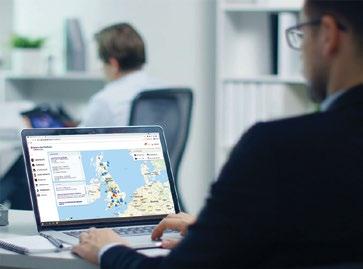
my.Sites provides a live view of the customer’s job sites, helping them with site efficiency, safety and machine management. The overview provides information on operator activity including all instances of unauthorised access attempts and multiple logins. By tracking multiple logins, the customer can see which operators need more assistance in using the login portal tech. It also prompts low battery alerts to ensure a machine has a full cycle of charge before operation. This reduces battery damage and site breakdowns, with ramifications for both energy, time and cost efficiency throughout the hire process.
By using Geofencing the customer can manage weight restricted areas of a site or keep specific machines in a certain area. If an unauthorised machine enters or leaves a designated zone, an alert is triggered, notifying the customer.
Machine usage can be calculated by configuring the working hours for a site. The customer can then see if a machine is being used effectively, which helps organise charging periods for electric machines where low usage periods are identified. Machine tracking shows the machines on site and their status - parked or in use - including whether they have triggered an alert as well as tracking upcoming maintenance.
my.Data enables the customer to directly integrate their own internal systems with Nationwide’s IT platforms. Customers choosing to integrate these systems will be able to access their own data and securely manage rental contracts/orders and account transactions directly from their own applications.
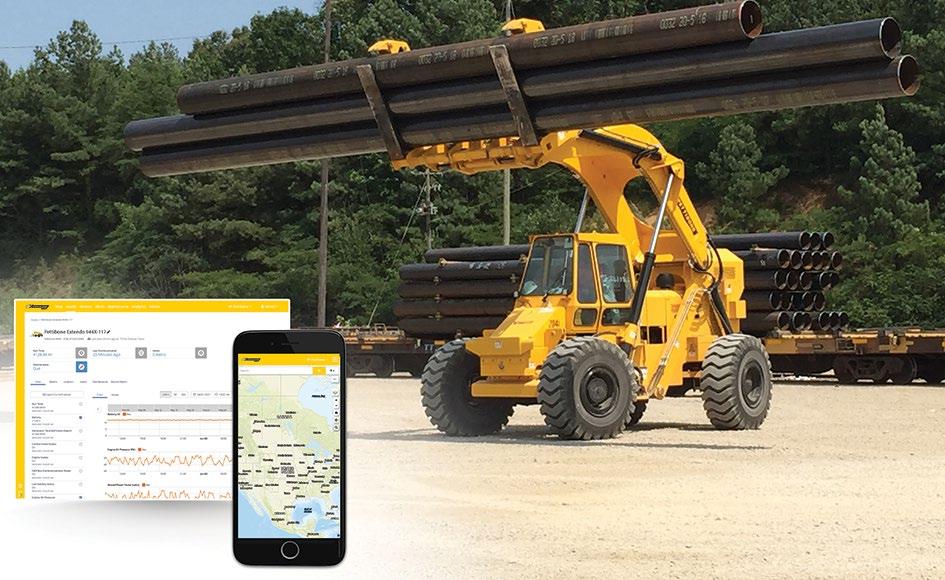
my.Training allows the customer to manage training bookings and view outstanding at height training needs. By directly integrating with services such as the license service provided by IPAF, it makes it easy to manage training requirements from a single source.
The Finance module allows the customer to perform transactions digitally, access duplicate invoices, view rental and machine locations, including off-hire machines, while also accessing billing overviews, see live invoices and raise invoice disputes.
Video Remote Assistance (VRA) allows immediate technical and safety assistance through a video call functionality. This can in some cases avoid the need for an engineer to attend site and has already resulted in a reduction of 250 site visits per month. Engineers are able to gain information before a visit, so that they can optimally prepare should a site visit be necessary. Since its introduction, 28 percent of all customer breakdowns have been resolved using VRA.
QR codes
For those who might be unsure, a QR code is a type of two dimensional matrix barcode, invented in 1994 by Japanese company Denso Wave for labelling automobile parts. It is growing in popularity as a method for storing and accessing all manner of data.
Early last year UK/Middle East rental company AFI launched a smart QR Code system for quicker rental terminations/off-hires. The system uses a unique QR code on each machine which the customer scans with their smart phone camera. After entering the relevant email address, they follow the link received via email and then select the off-hire dates and press ‘submit’. The QR codes also provide direct links to information specific to that machine including manuals, LOLER and PDI details, reporting breakdowns and machine familiarisation videos.
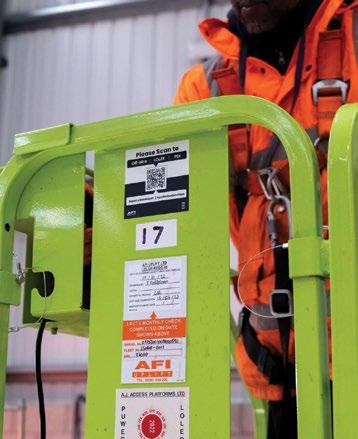
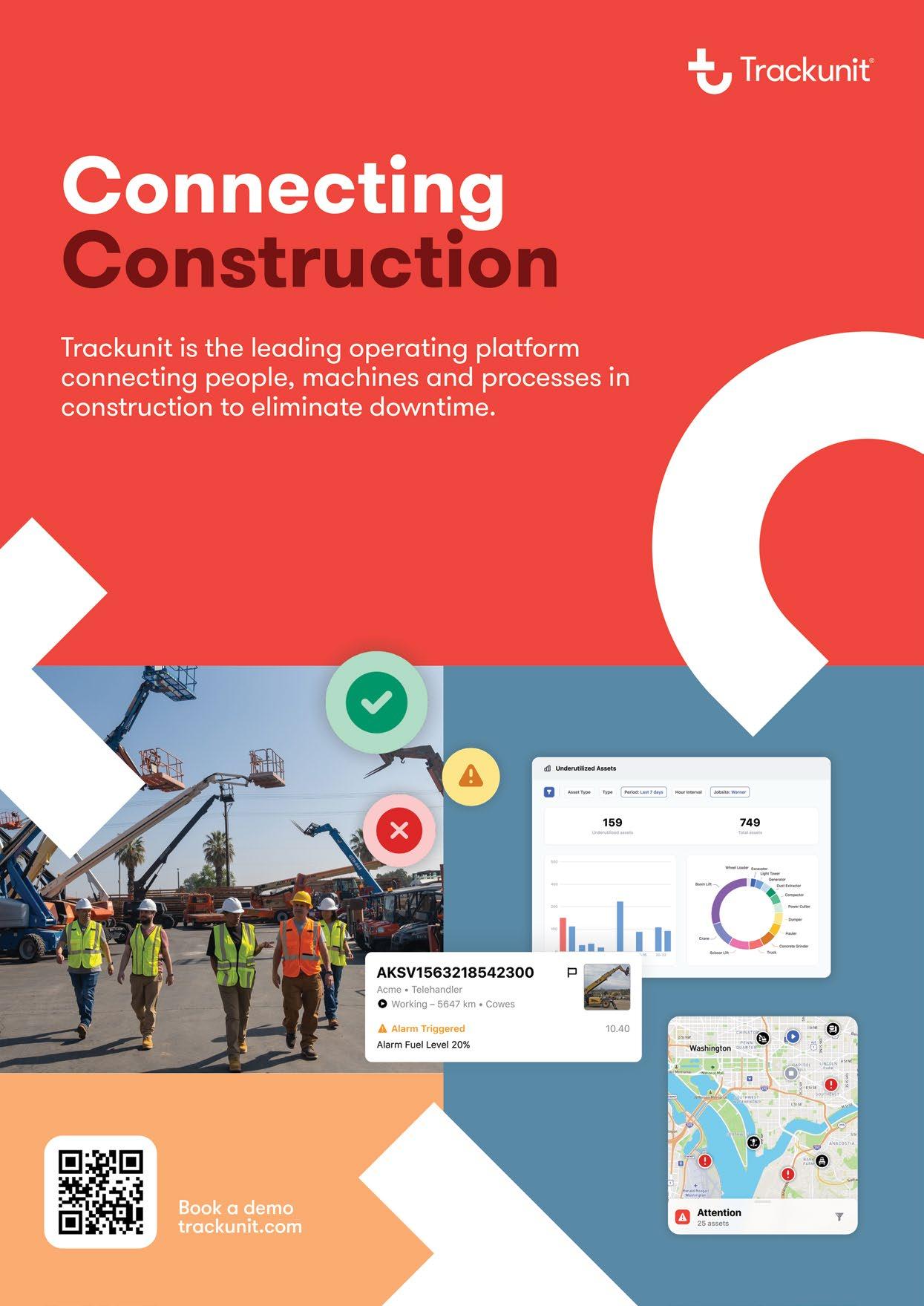
Donna Stonall of AFI said: “We have invested in this latest technology to streamline our end to end hiring process and improve the user experience whilst further reducing our carbon footprint.”
MCS adds QR codes
MCS Rental Software - a leading provider of rental management solutions - recently launched its QR code scanning system as a way customers can interact with their rental equipment. A unique QR code is placed on any piece of equipment and when scanned, rental customers gain instant access to information such as user manuals, certificates and other useful data.
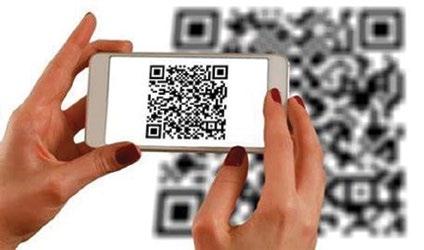
MCS Rental Software says that its new feature not only empowers the end user but also promotes brand consistency for the rental company. The stored information accessed via the QR code can be customised to include company branding, ensuring that every interaction a customer has with the rental equipment strengthens the brand image.
Sales director Nick Thompson said: “Implementing QR code technology in equipment rental operations goes beyond digitisation, it is a step towards improved efficiency and increased customer satisfaction. For rental companies, it simplifies operations, maintains brand consistency and provides better service. Clients benefit from easy access to information, saving them time and improving their overall rental experience. It’s a win win scenario.”
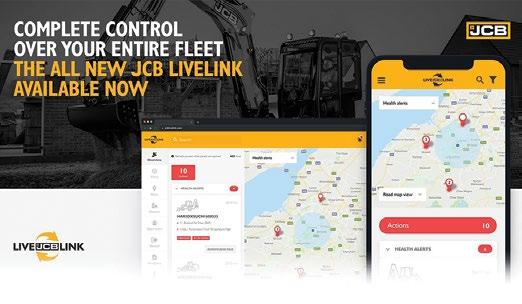
JLG clearsky smartfleet
And finally, JLG is set to launch ‘ClearSky SmartFleet’ - a new interactive telematics solution for its machines. The new development will include next generation Internet of Things (IoT) technology, with a platform for true two way fleet management and machine interactivity. It will eventually be standard equipment on most JLG machines. Ara Eckel, director of product management for JLG’s connected solutions said: “Telematics today can only do so much. ClearSky Smart Fleet reimagines what’s possible, paving the way to a new frontier for connectivity solutions in the industry.” ■
